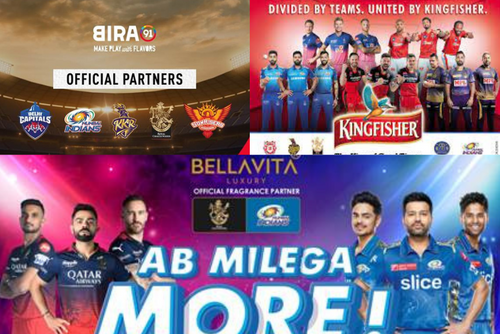
Media agency network EuroRSCG Worldwide has released its annual analysis of trends for the coming year. Campaign has thumbed through the 160-page report to extract some of the more relevant thoughts for Asia-Pacific.
The findings were compiled by Marian Saltzman, president of EuroRSCG Worldwide PR, and are based on a combination of global and national surveys, journalistic reports, one-on-one conversations, and “gut instinct”.
A general advertising trend highlighted by the report is a ‘craving for authenticity, transparency and truth’. “Perhaps the overslick, highly stylised era of ad porn is over”, said the report. The tone of the future is one with “real” people, such as Levi’s campaign featuring townsfolk from Braddock, Pennsylvania and Leo Burnett Thailand’s heartwarming TVC for TMB featuring “The Story of Panyee FC”.
In line with this trend, EuroRSCG predicts a return to brand heritage where brands with rich traditions appeal to consumers searching for a deeper meaning behind the choices they make. Also, there will be an inclination towards advertisements that don’t take themselves too seriously. Playfulness is in with gaming and interactivity. An example raised in the report is VitaminWater’s interactive bus shelters in the US that allowed commuters to plug in and charge their mobile devices. The popularity of Old Spice’s cheeky “The man your man could smell like” online and TV campaign also hinges on the element of play.
For Asia, EuroRSCG trend-spotted China’s burgeoning art market. Quoting a piece by The Economist, the report pointed out that auction and gallery sales in China were worth US$8.3 billion last year and accounted for 23 percent of the global market. Galleries, art dealers and architects like Frank Gehry are looking to this booming market as the west slows down.
Besides collecting fine art, the Chinese are also embracing travel. According to David Scowsill, CEO of the World Travel and Tourism Council, “The growth of China outbound travel is moving at a huge pace … [about a] 20 percent increase every year. And the number of outbound Chinese travelers hit 58 million last year,” quoted the report. To cater to this, hoteliers in the US are offering updated menus and hiring bilingual staff.
Indonesia is another rising star on the Asian horizon, with its growing middle class expected to double over the next few years to 50 million, said the report quoting the Jakarta Globe. The trends report is betting on Indonesia to take its place beside Malaysia and Singapore as a major market for luxury brands in the coming year.
The nation is also growing online with internet penetration, particularly mobile internet penetration, tripling in the country’s nine largest cities over the past six years. “This will lead to consumers sharing more thoughts and desires online, so marketers should be prepared to jump in and talk to this new generation,” said the report. Customising goods for a largely Muslim population would be key to appealing to this market segment, it noted.
Luxury retailers have also taken note of India, which the report speculates could be “the new Dubai”. With ATMs in Mumbai that dispense diamonds, silver and gold coins, and a new flagship Hermes store in Mumbai selling saris priced at US$8,000 India is a market to cater for.
Another niche-market the report identifies is the grey Japan. With population figures for those aged 65 or older now at almost 30 million, or 23 per cent of the total population, and those under 15 only accounting for 13.2 per cent, Japan’s market trends are undergoing a significant shift. “Some interesting changes are a drop in the number of smokers and brands exploring how to cater to the over-50 crowd with LG releasing a phone with larger buttons and easy to read text,” observed the report.
EuroRSCG also predicts a predilection for strong colours in Asia, buoyed by optimism. The report quotes a study on the region’s colour preferences by chemical company BASF that found colour trends would “reflect success and intelligence, breaking free from social and economic difficulties.” Conversely, worldwide colour trends find consumers seeking “simple values and a mindset focused on low-key eco-friendly designs.”
The report includes little detail on social media trends in China, with only the following statement offering a nod to the growing phenomenon: “Not everyone is excited about social media: China might be rising as a huge player on the world stage, but not in the world of social; it is censoring social media, and the warnings have been severe, with threats of punishment.”
Andrew Knott, EuroRSCG’s chief digital officer for Asia offered these clarifying thoughts to Campaign. “It’s a case of looking at the issue through a global lens rather than a local one,” he said. “When you consider that there are 900 million users on Facebook worldwide and less than 100,000 from China… the report is trying to highlight that global players haven’t had as free-an-access to this market as to other markets. But it should be noted that local players have stepped into this opportunity.”
The report’s lack of emphasis on social media trends in China, he said, has much to do with China’s foregone inclusion into the world’s strongest economies. “The report strives to point out new trends, and people are (now) speaking less about the Far East being the next frontier. China is not a third world market, it’s a major economy,” he said.
The aim of the report, he continued, is to point to issues that have "heat" around them, “Cloud computing, for example, is an issue that has saliency. Once Apple’s launched iCloud, it’ll become an everyday part of life.”
Nevertheless, Knott had a few observations to share about China’s social media market. “It’s important to note that China’s internet landscape is fairly unique. Perhaps some RenRen and Sina Weibo started as ‘clones’ of Facebook and Twitter but they have since evolved into quite different services.”
The reason for this, he said, is the difference in sharing between North Asian markets and the West. “The North Asian market is very much centered around content creation, as opposed to information gathering. It’s less about ‘I read this, and this is what I think’ sharing and more about jokes, pictures, stories and videos.”
Social networking platforms in China have evolved to a point where the market is “defining new ways of being social”. “It’s gotten to the point where even if the doors were thrown open, the local players would continue to dominate.”
The level of engagement between brands and consumers in China is also very high. “Chinese consumers really do engage with brands through social networks and are more favourably disposed to brands compared to other markets. They are more open and brands on social are likely to have a positive response,” said Knott.
Social media’s impact in China is not about to lessen in any way, shape or form, he said. “About 54 million smartphones were sold in China this year, bringing more people online and accelerating the dominance of social in China.”
“Social media is the centre of gravity for digital marketing in China. A recent Synovate report said that the internet had surpassed TV, for the first time, in terms of influence and engagement in China. It’s a really, really big deal.”
This article first appeared on CampaignAsia



.jpg&h=334&w=500&q=100&v=20250320&c=1)
.jpg&h=334&w=500&q=100&v=20250320&c=1)


.jpg&h=334&w=500&q=100&v=20250320&c=1)
.jpg&h=334&w=500&q=100&v=20250320&c=1)

.jpg&h=334&w=500&q=100&v=20250320&c=1)
.jpg&h=334&w=500&q=100&v=20250320&c=1)








